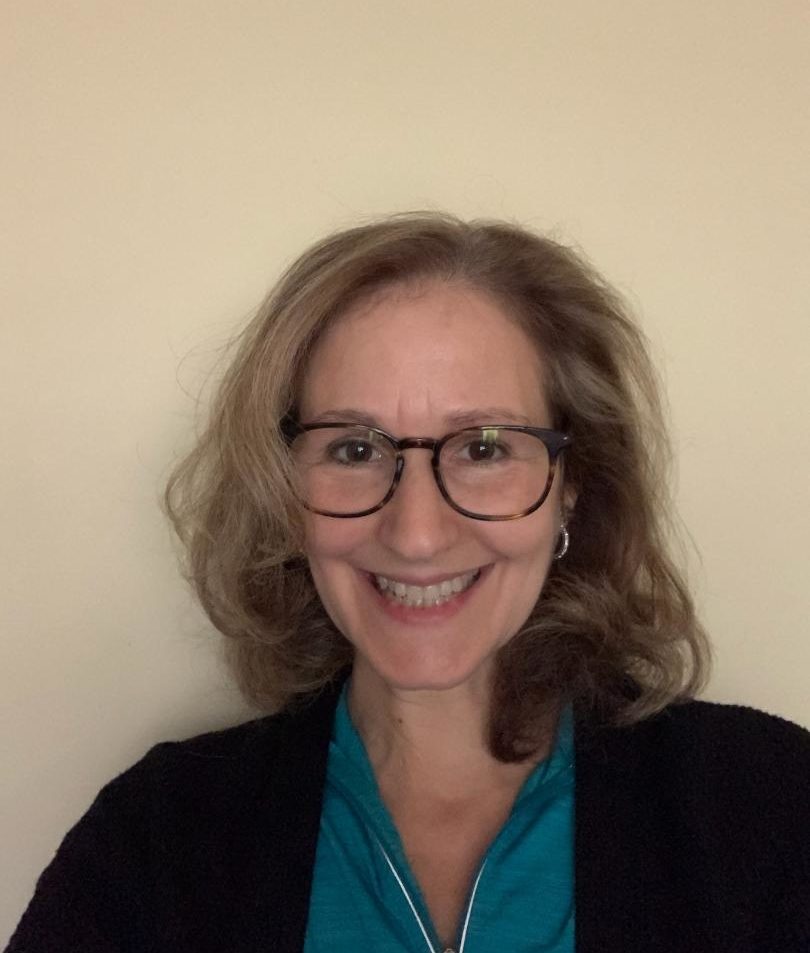Laura Kaplan calls the therapeutic “brain” glasses first prescribed her by the Mind-Eye Institute a “game-changer.”
“The impact [of the glasses] was immediate. I actually was able to work at a computer and look at the screen for 20 minutes,” says Laura, who had traveled from her Minnesota home to the Northbrook, Ill.-based Mind-Eye Institute (www.mindeye.com) in the hope of finding relief from the concussive-like symptoms that had plagued her for several years.
“Then, even more incredibly, Dr. Zelinsky makes a follow-up call to me and suggests where I should place tape on the left lens of my glasses to act as a filter. Suddenly, I can remain on the computer for 45 minutes,” Laura recalls.
“Dr. Zelinsky” is Deborah Zelinsky, OD, founder and executive research director of the Mind-Eye Institute, which is known worldwide for its work in bringing symptom relief to brain-injured patients by stimulating, modifying, and regulating patients’ visual processing. “Visual processing” refers to the brain’s almost instantaneous ability, consciously and subconsciously, to take in external sensory signals (from eyesight, hearing, smell, taste and touch), combine them with a person’s internal sensory signals (such as head position and muscle tension), and process the information, allowing a person to react and respond to his or her environment.
When functioning normally, visual processing enables people to understand and interact appropriately to the world around them, explains Dr. Zelinsky. “If brain circuitry is disrupted due to injury or neurological disorders, like anxiety, people become confused about their surrounding environment and exhibit inappropriate reactions and responses to movement, sounds, and light.”
Laura knew her visual processing capabilities were off because of a negative reaction to a medication she was taking in 2014. The “reaction” resulted in a mild traumatic brain injury.
“I developed light and sound sensitivities,” says Laura, now in her mid-50s, who was working as a physical therapist when her debilitating symptoms developed. “I could not be around crowds, I found it difficult to read and I needed to be in the dark. I was unable to look at bright screens on computers or televisions. If I were at a computer for more than a minute, I would start getting a migraine-like headache.”
She sought help through the standard health care system, making appointments with neurologists and optometrists in the Minneapolis area. “I had eight different eyeglass prescriptions in a two-year period, but my symptoms were only getting worse,” she says. “I was prescribed various medications that, in some instances, made my symptoms more manageable. Yet, I still struggled with the bigger problems of being unable to read or work on computers.”
Then, the unexpected happened.
“I was listening to a radio talk show about concussions, and the featured guest was the author of the book The Ghost in my Brain. He described how he developed symptoms similar to mine following a car crash and mentioned the role of the Mind-Eye Institute and Dr. Zelinsky in his recovery,” Laura says. “I researched the Institute and scheduled an appointment.”
The 2015 book author to whom Laura refers is none other than Clark Elliott, an academician at DePaul University in Chicago. In his book, Elliott details his two-year-long, but successful, journey back to his old self following a severe traumatic brain injury – a journey that included a referral to Dr. Zelinsky.
Laura describes her initial testing at the Mind-Eye Institute as being “out of the box but based on logic. I work in rehabilitative medicine, so these kinds of assessments make sense.”
Dr. Zelinsky diagnosed Laura as having a convergency insufficiency, a condition in which the eyes fail to work together efficiently. “Dr. Zelinsky indicated some of the informational nerve pathways in my visual processing system were disrupted, and the strain of trying to use these same pathways was causing me headaches. She said she would develop a work-around to help create new informational highways in my brain,” Laura says.
The Mind-Eye Institute helps develop – or re-establish – patients’ visual processing capabilities by using therapeutic eyeglasses and other advanced mind-eye techniques. “Brain” glasses bend light in different ways across the retina, which is composed of brain tissue and is part of the central nervous system.
“’Brain’ glasses are not about achieving 20/20 clarity,” Dr. Zelinsky says. “They are designed to improve patient comfort by rewiring dysfunctions in peripheral retina signals. The intent is to resynchronize brain circuitry between motor and sensory systems in order to improve a patient’s overall visual processing. The motor and sensory circuitries are meshed with other systems due to interactions of the retina directly with brainstem and limbic functions.”
After receiving her first pair of “brain glasses,” Laura was able to return to work part-time. Today, she wears her fourth set of Mind-Eye lenses and is able to “read at length” and spend an hour or more at the computer in one sitting. Her light and sound sensitivities also have markedly declined.
“I would absolutely recommend Dr. Zelinsky and her team,” Laura states. “What is needed is a new kind of approach like that offered by the Mind-Eye Institute.”

